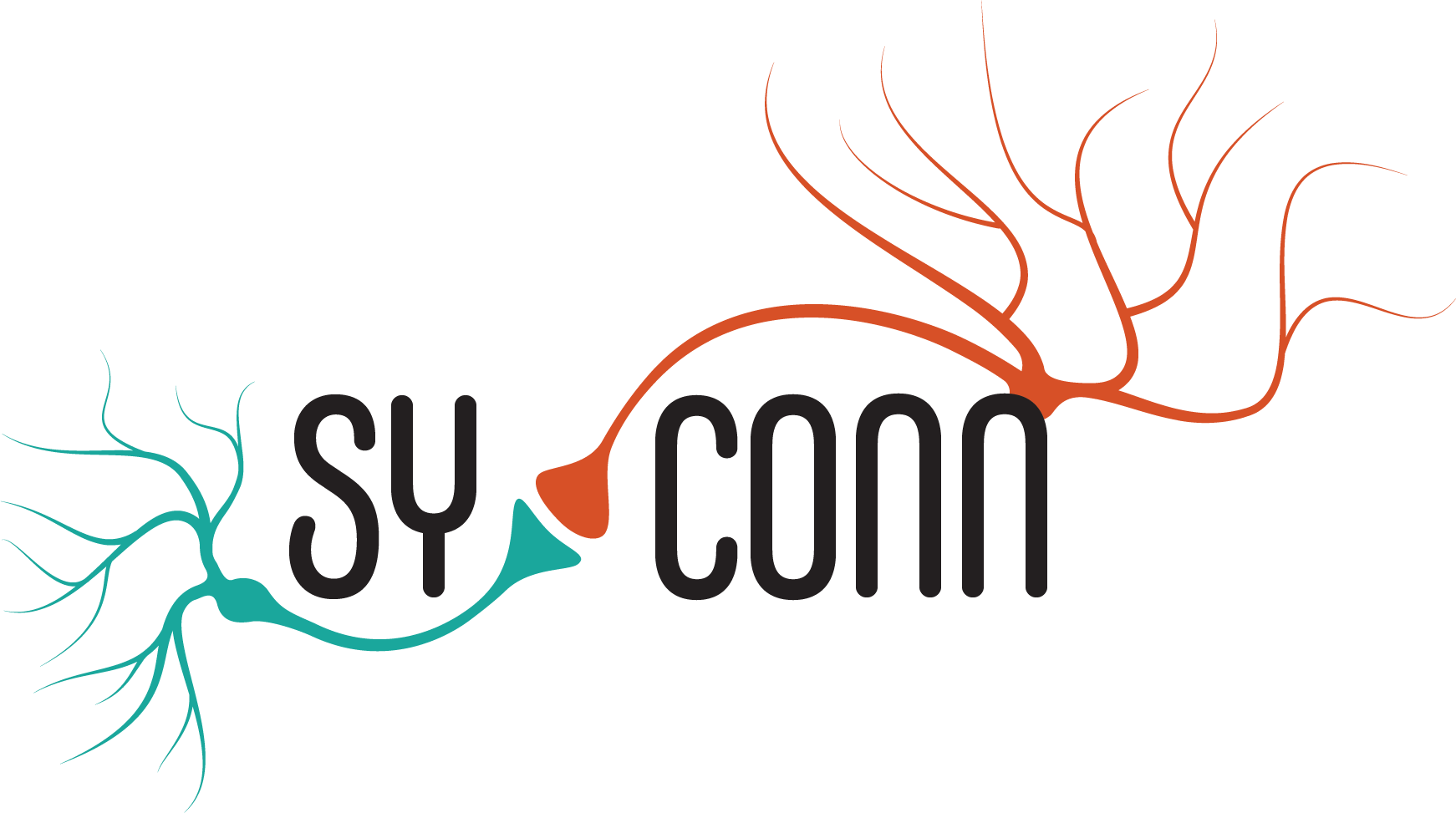Refactored version of SyConn for automated synaptic connectivity inference based on dense EM segmentation data. For the first version see below or checkout the branch dorkenwald2017nm.
Current features:
- introduction of classes for handling of supervoxels (e.g. cell fragments, predicted cellular organelles like mitochondria, vesicle clouds etc.) and agglomerated supervoxels
- prediction of subcellular structures, supervoxel extraction and mesh generation
- (sub-) cellular compartment (spines, bouton and axon/dendrite/soma) and cell type classification with multiview- [2] and with skeleton-based approaches [1]
- glia identification and separation [2]
- connectivity matrix export
- KNOSSOS plugin for interactive exploration (work in progress)
If you use parts of this code base in your academic projects, please cite the corresponding publication(s).
The documentation for the refactored version is still work-in-progress and can be found here. Alternatively and for API docs please refer to the latest readthedocs build.
For SyConn v1, please refer to the old documentation. We also present more general information about SyConn on our Website.
The Synaptic connectivity inference toolkit is currently developed at the Max-Planck-Institute of Neurobiology in Martinsried by Philipp Schubert, Maria Kawula, Carl Constantin v. Wedemeyer, Atul Mohite, Gaurav Kumar and Joergen Kornfeld.
We are especially grateful for the support by Winfried Denk who enabled this work in his department. We also want to thank Christian Guggenberger and his group at the MPCDF for cluster support and deepmind for providing egl extension code to handle multi-gpu rendering on the same machine. The original code snippet (under the Apache License 2.0) used for our project can be found here. Thanks to Julia Kuhl (see http://somedonkey.com/ for more beautiful work) for designing and creating the logo and to Rangoli Saxena, Mariana Shumliakivska and Josef Mark for code contributions.
[1] Automated synaptic connectivity inference for volume electron microscopy
@ARTICLE{SyConn2017,
title = "Automated synaptic connectivity inference for volume electron
microscopy",
author = "Dorkenwald, Sven and Schubert, Philipp J and Killinger, Marius F
and Urban, Gregor and Mikula, Shawn and Svara, Fabian and
Kornfeld, Joergen",
abstract = "SyConn is a computational framework that infers the synaptic
wiring of neurons in volume electron microscopy data sets with
machine learning. It has been applied to zebra finch, mouse and
zebrafish neuronal tissue samples.",
journal = "Nat. Methods",
publisher = "Nature Publishing Group, a division of Macmillan Publishers Limited. All Rights Reserved.",
year = 2017,
month = Feb,
day = 27,
url = http://dx.doi.org/10.1038/nmeth.4206
}
[2] Learning cellular morphology with neural networks
@Article{Schubert2019,
author={Schubert, Philipp J.
and Dorkenwald, Sven
and Januszewski, Michal
and Jain, Viren
and Kornfeld, Joergen},
title={Learning cellular morphology with neural networks},
journal={Nature Communications},
year={2019},
volume={10},
number={1},
pages={2736},
abstract={Reconstruction and annotation of volume electron microscopy data sets of brain tissue is challenging but
can reveal invaluable information about neuronal circuits. Significant progress has recently been made in automated
neuron reconstruction as well as automated detection of synapses. However, methods for automating the morphological
analysis of nanometer-resolution reconstructions are less established, despite the diversity of possible applications.
Here, we introduce cellular morphology neural networks (CMNs), based on multi-view projections sampled from automatically
reconstructed cellular fragments of arbitrary size and shape. Using unsupervised training, we infer morphology embeddings
(Neuron2vec) of neuron reconstructions and train CMNs to identify glia cells in a supervised classification paradigm,
which are then used to resolve neuron reconstruction errors. Finally, we demonstrate that CMNs can be used to identify
subcellular compartments and the cell types of neuron reconstructions.},
issn={2041-1723},
doi={10.1038/s41467-019-10836-3},
url={https://doi.org/10.1038/s41467-019-10836-3}
}
